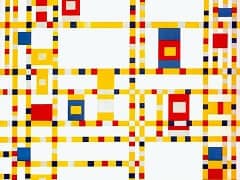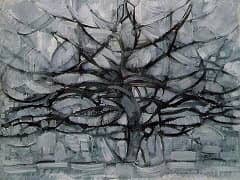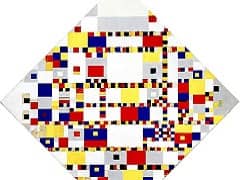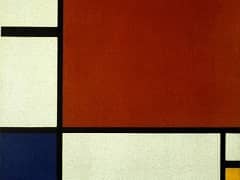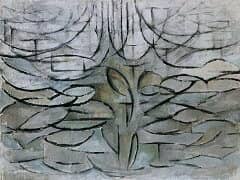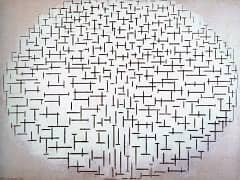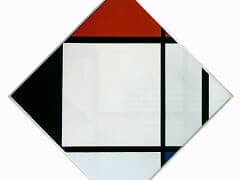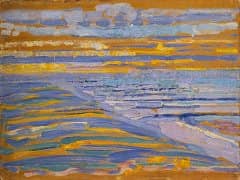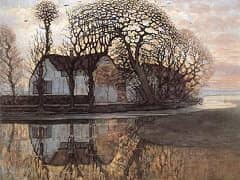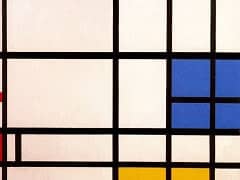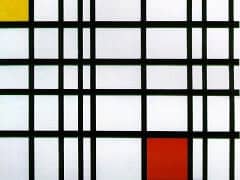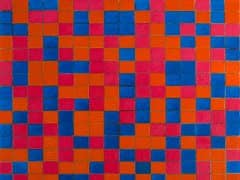Triangulated Farmhouse Facade with Polder in Blue by Piet Mondrian
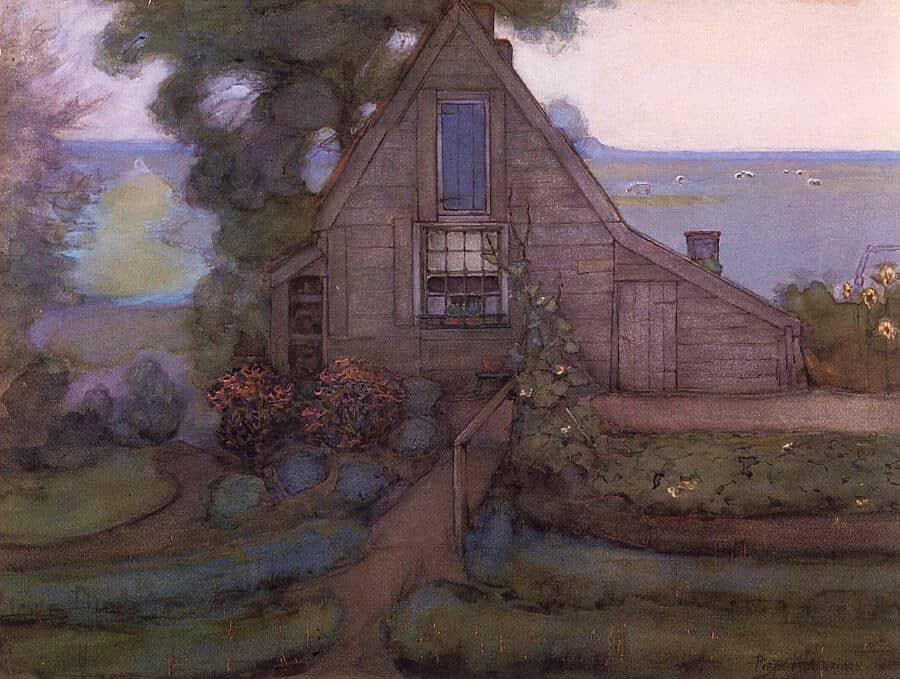
Several times, Mondrian was forced to interrupt his education. He spent the entirety of 1897 with his brothers in the countryside. Falling ill with pneumonia in the autumn of 1898, he had to spend most of the following
year in his parents' home.
During these years, Mondrian painted prolifically, producing illustrations, most of them religious, some portraits, and a large number of watercolor landscapes, depicting rural scenes. Triangulated Farmhouse Facade with
Polder in Blue is an example of his works of the period. Although little innovation is immediately apparent in these works, Mondrian had already come to understand that the future of painting did not lie in realism.
Many of the works - even the landscapes - were painted in his studio, not en plein air, and sought to capture a mood rather than detail. There is a certain resemblance to the paintings of the Post-Impressionists, like
Paul Cezanne and Van Gogh, and the early Art Nouveau artists, like Gustav Klimt.
It almost appears that, on observing the landscape, Mondrian tended, on the one hand, to extrapolate the natural element, which he began to identify with a primarily horizontal space (see the group of landscapes shown above)
and on the other to accentuate in the opposite direction, i.e. the vertical, the shape of the non-natural spaces, the artificial, man-made spaces (windmills, lighthouses, churches).
Mondrian was in search of space based on a relationship between opposing entities because he felt in his heart the contrast between the virtually infinite manifold dimension of nature and the finite and individual human
condition, between the physical space of the external world stretching away beyond the horizons of sight (especially in the Netherlands) and the mental space internally developed by the human subject; the contrast between
expansion and concentration, matter and spirit, multiplicity and unity.

